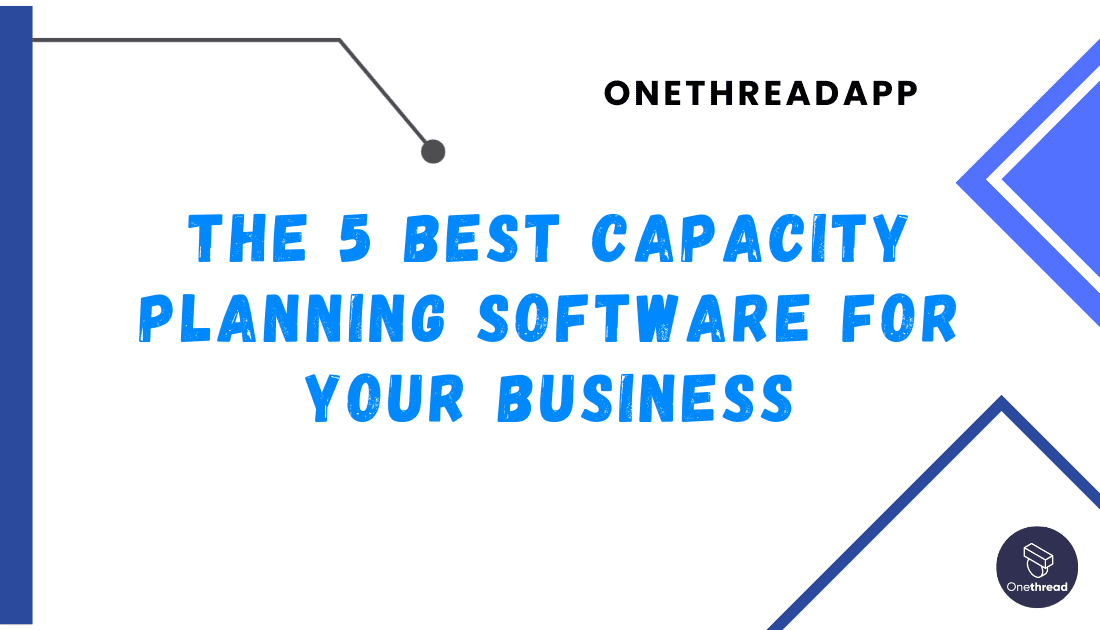In the ever-evolving world of business, here’s a striking statistic to ponder: A report by McKinsey & Company revealed that a staggering 83% of companies face challenges related to resource capacity planning, leading to bottlenecks, missed opportunities, and lost revenue.
If that doesn’t ring the alarm bells for businesses, what will?
Welcome to the realm of Capacity Planning Software, the digital wizardry that can help organizations unlock their full potential. In this article, we’re about to unveil the top 5 solutions that are poised to transform the way you allocate resources, manage workloads, and optimize your business’s efficiency.
Whether you’re a project manager, a department head, or a business owner, these tools are your compass in navigating the complex waters of resource allocation. Join us as we dive into the software set to revolutionize how businesses harness their capacity for success in today’s dynamic landscape.
Quick List of Capacity Planning Software
- Onethread: Simplify Capacity Planning for Enhanced Project Efficiency.
- Smartsheet: Effortlessly plan and allocate resources with Smartsheet’s intuitive capacity management features.
- Parallax: A comprehensive solution for strategic capacity planning and portfolio management.
- NetSuite ERP: Simplify resource management and scheduling for teams of all sizes.
- Float: Real-time capacity planning software that ensures your team works at its full potential.
Our reviewers evaluate software independently. Clicks may earn a commission, which supports testing. Learn how we stay transparent & our review methodology
Comparison Chart Of Capacity Planning Software
Here’s a table chart with a bit more detail on how each Capacity Planning Software
Features | Visual Capacity Planning | Resource Allocation | Portfolio Management | Team Scheduling |
 | Provides visual workload views | Allows resource allocation, Add Vendor Company, Sprint | Does not focus on portfolio management. | Offers team scheduling and workload views. Gantt Chart, Calendar View |
 | Offers Gantt charts and visual project views. | Provides tools for resource allocation. | Does not focus on portfolio management. | Offers team scheduling and task assignment. |
 | Supports visual project and portfolio management. | Offers resource allocation and management features. | Specializes in portfolio management. | Supports team scheduling and task management. |
 | Does not focus on visual capacity planning. | Facilitates resource allocation. | Does not focus on portfolio management. | Provides team scheduling and management. |
 | Offers real-time visual workload insights. | Allows resource allocation and scheduling. | Does not focus on portfolio management. | Facilitates real-time team scheduling. |
What is Capacity Planning Software?
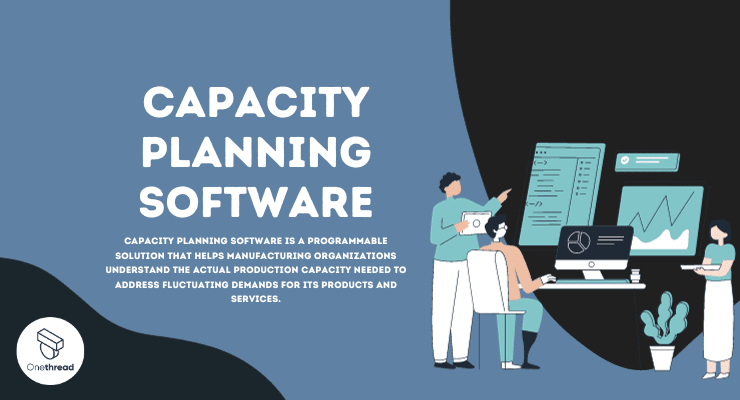
Capacity Planning Software is a specialized tool designed to help organizations effectively manage and optimize their resources, whether they are human, equipment, or other assets. Capacity Planning Software can be likened to the conductor of an orchestra.
Just as a conductor coordinates the musicians to create harmonious music, this software orchestrates your resources and tasks to create a harmonious workflow within your organization.
It ensures that every resource is utilized effectively, preventing overloads or underutilization, much like a conductor ensures that each instrument plays its part at the right time and in the right measure to produce a symphony of productivity.
Why Capacity Planning Software Is Important to Your Business?
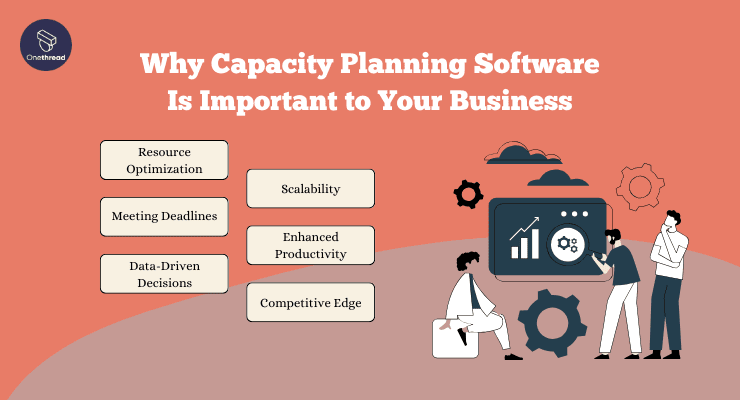
Capacity Planning Software is the strategic compass that guides businesses to success by ensuring optimal resource utilization and streamlined operations. Here are the key reasons why it’s indispensable:
- Resource Optimization: It helps you make the most of your resources, preventing overwork or underutilization, leading to cost savings.
- Meeting Deadlines: By efficiently allocating tasks and workloads, it ensures projects are completed on time, enhancing client satisfaction.
- Data-Driven Decisions: It provides insights through data analysis, aiding in informed decisions on resource allocation and project planning.
- Scalability: Businesses can confidently scale up or down, adapting to changing demands without inefficiencies.
- Enhanced Productivity: It promotes a culture of productivity by aligning resources with business goals, boosting overall efficiency.
- Competitive Edge: Companies that effectively plan their capacity can respond faster to market changes, gaining a competitive advantage.
Incorporating Capacity Planning Software is a strategic move that enhances resource management, boosts productivity, and positions your business for sustained growth.
Key Features to Consider in Capacity Planning Software
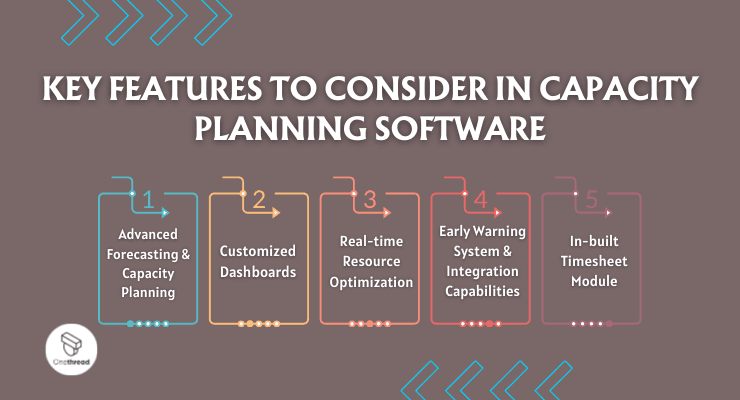
The right Capacity Planning Software should offer a comprehensive set of features to meet your organization’s specific needs. Here, we delve into the key features that should be on your radar when evaluating these software solutions:
Advanced Forecasting and Capacity Planning
Capacity Planning Software should excel in forecasting future resource demands based on historical data and current trends. It should allow you to create detailed capacity plans, ensuring you can allocate resources optimally to meet upcoming project requirements.
Customized Dashboards
Customization is essential in tailoring the software to your unique business processes. Look for software that provides the flexibility to create personalized dashboards, portals, and reports, enabling you to visualize your data in the most meaningful way for your organization.
Real-time Resource Optimization
Real-time resource optimization ensures your organization can adapt swiftly to changing demands. The software should allow for scenario modeling and simulation, enabling you to test different resource allocation strategies and assess their impact on your capacity planning.
Early Warning System & Integration Capabilities
An early warning system is crucial to identify potential issues in your capacity planning before they become critical. Additionally, the software should integrate seamlessly with other tools and systems within your organization to ensure a cohesive workflow.
Inbuilt Timesheet Module
A built-in timesheet module simplifies the tracking of actual resource usage. It should allow employees to log their work hours accurately, providing valuable data for capacity planning and resource allocation decisions.
Top 5 Capacity Planning Software
Capacity planning is crucial for efficient resource allocation. Here are the top 5 Capacity Planning Software solutions that can help you optimize your operations and make data-driven decisions.
#1. Onethread

Onethread is a top-notch project management software that allows you to optimize resource allocation (specifically, human resources), ensure projects run smoothly, and maximize efficiency.
With Onethread, you can effortlessly manage workloads, allocate tasks, and keep your team on track. Say goodbye to overbooked schedules and missed deadlines.
Onethread offers a user-friendly interface and powerful features, making it a go-to choice for businesses of all sizes. It’s the smart way to balance workloads and boost productivity. Get ahead in the game with Onethread’s cutting-edge capacity planning solution.
Try Onethread
Experience Onethread full potential, with all its features unlocked. Sign up now to start your 14-day free trial!
Overview and key features
1. Resource Allocation
Effortlessly assign and manage resources based on their availability, skills, and project demands. Onethread ensures your team is utilized efficiently, minimizing downtime.
2. Workload Balancing
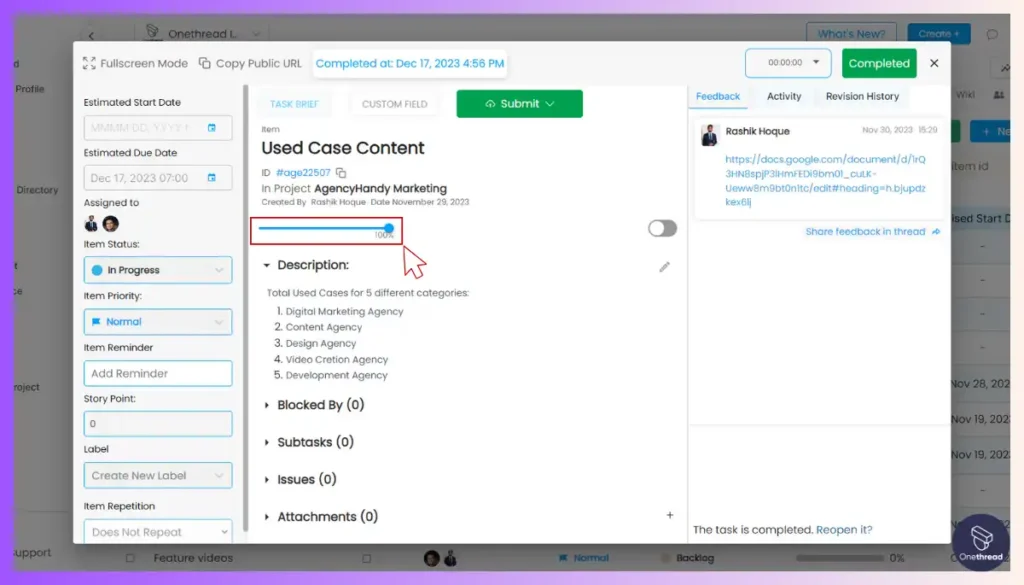
Keep workloads in check with real-time tracking. Monitor task progress, balance workloads, and prevent resource overallocation to meet project deadlines consistently.
3. Dependency Management
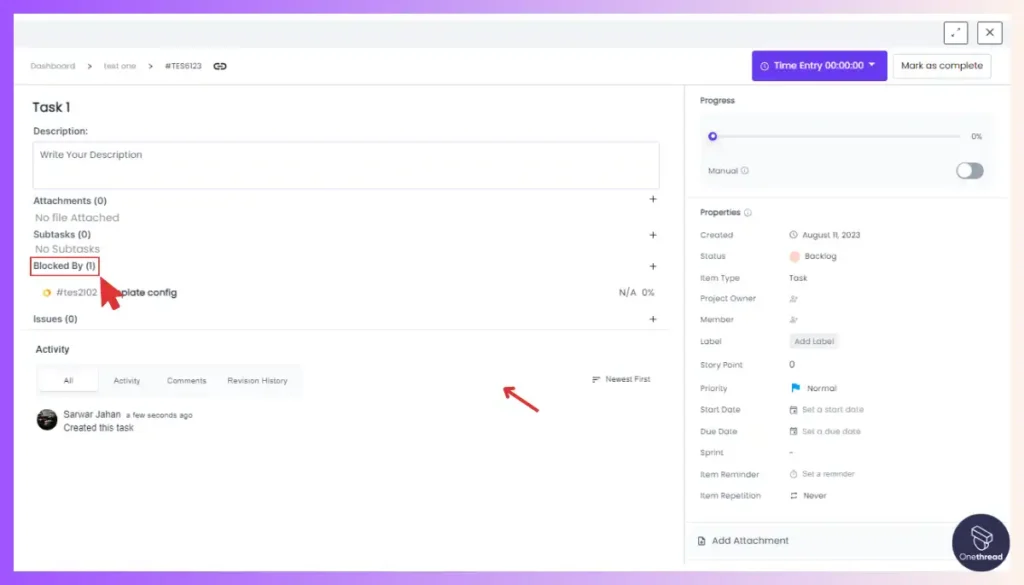
Handle intricate project structures seamlessly. Define task dependencies to establish a logical workflow, ensuring tasks are completed in the right order to avoid bottlenecks.
4. Customizable Dashboards
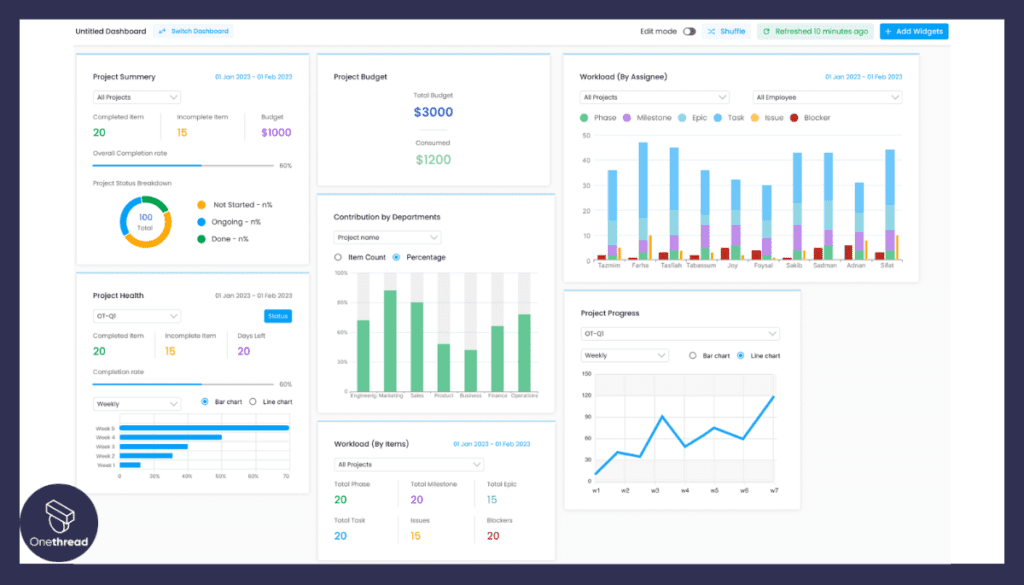
Tailor your workspace for maximum productivity. Customize dashboards to display critical project and resource data, providing you with a quick overview of your operations.
5. Collaboration Tools
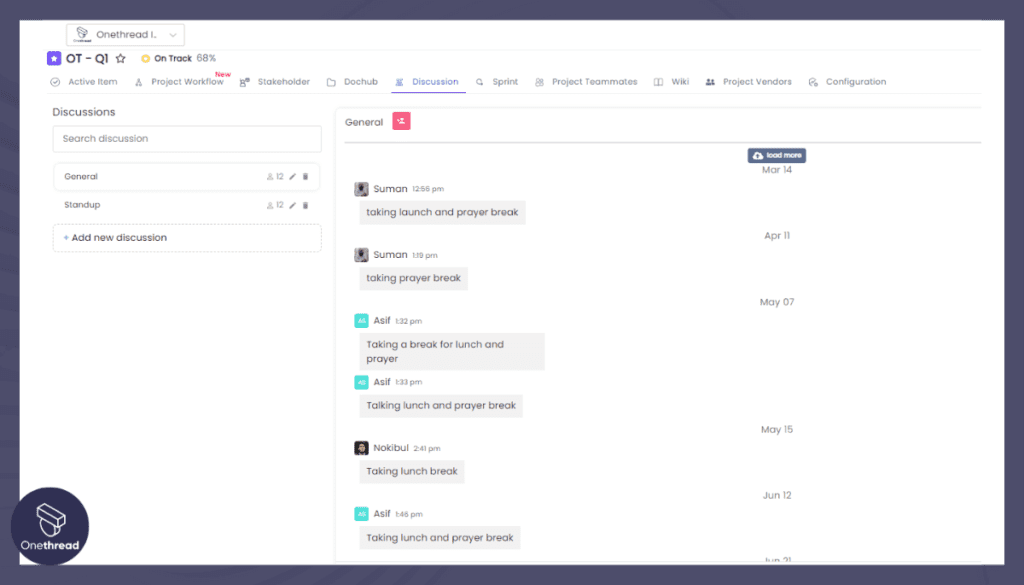
Foster team collaboration with integrated tools. Discuss tasks, share files, and maintain open communication within the platform, keeping everyone aligned and informed.
Pricing plans and options

Free Plan:
- Price: $0
- Features: Basic resource allocation, task tracking, limited reporting, minimal customization. Ideal for small teams.
Growth Plan:
- Price: $3.6/user/month
- Features: Advanced resource allocation, task tracking, expanded reporting, customization, collaboration. For growing teams.
Scale Plan:
- Price: $6/user/month
- Features: Comprehensive allocation, workload balancing, capacity forecasting, dependency management, integrations, security. For enterprises.
Try Onethread
Experience Onethread full potential, with all its features unlocked. Sign up now to start your 14-day free trial!
#2. Smartsheet
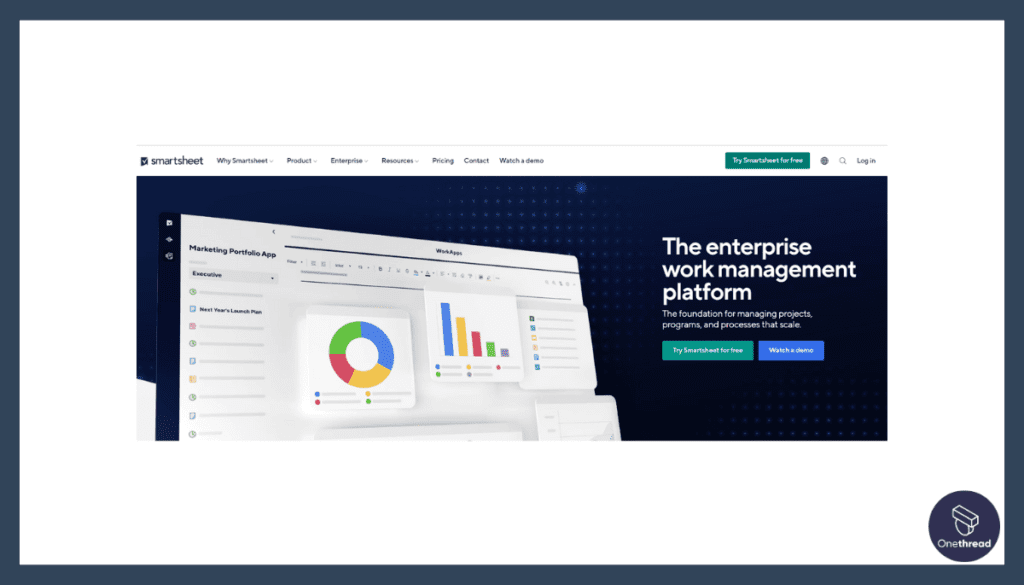
Smartsheet is a dynamic work platform. It’s designed for task and project management. The tool is versatile, catering to businesses of all sizes. Users can plan, execute, and report work in real time.
It offers multiple layouts like grids, cards, and Gantt charts. Collaboration is easy. Teams can share files, set alerts, and make comments. Smartsheet integrates with popular apps like Salesforce, Google Workspace, and Microsoft Office.
It’s accessible on mobile, so you can manage work on-the-go. Automation features streamline repetitive tasks. The platform is secure, adhering to top industry standards. Smartsheet enhances efficiency, fosters team collaboration, and helps organizations stay agile.
Smartsheet – Overview
Product Information:
- Company Valuation: $5.54 billion as of September 20, 2023.
- Employee Numbers: 3,191 (2023)
Founding Team:
Smartsheet founded by Maria Colacurcio, Brent Frei and Eric Browne.
Features
Let’s dive deep into the five standout features that position Smartsheet as a top-tier choice for businesses looking to optimize their capacity planning processes.
1. Gantt Chart Mastery
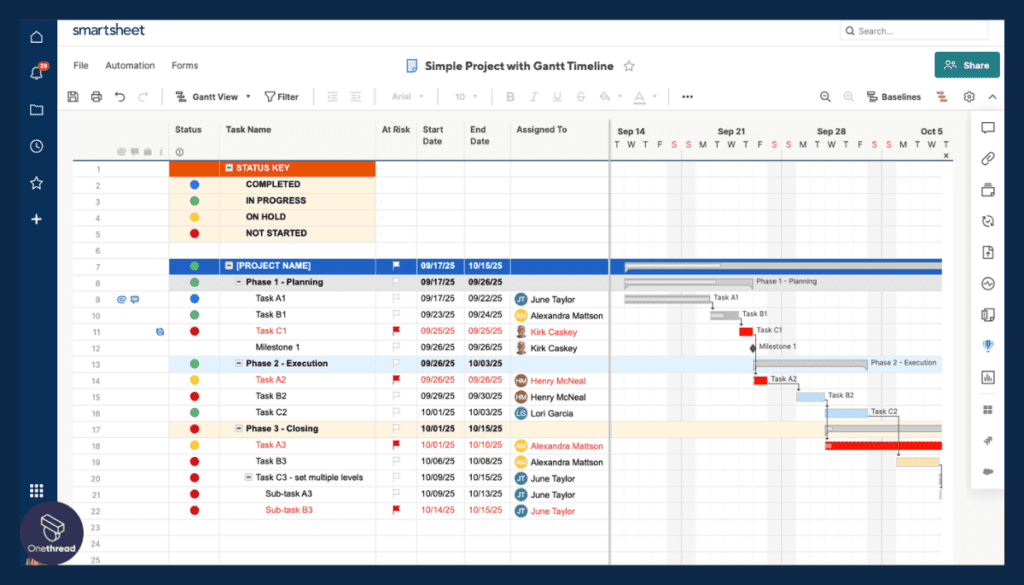
With Smartsheet’s Gantt chart tool, users can create dynamic Gantt charts that visually represent project timelines and resource allocation. This visual clarity simplifies resource optimization, enabling businesses to allocate resources effectively and meet project deadlines consistently.
2. Resource Allocation Excellence
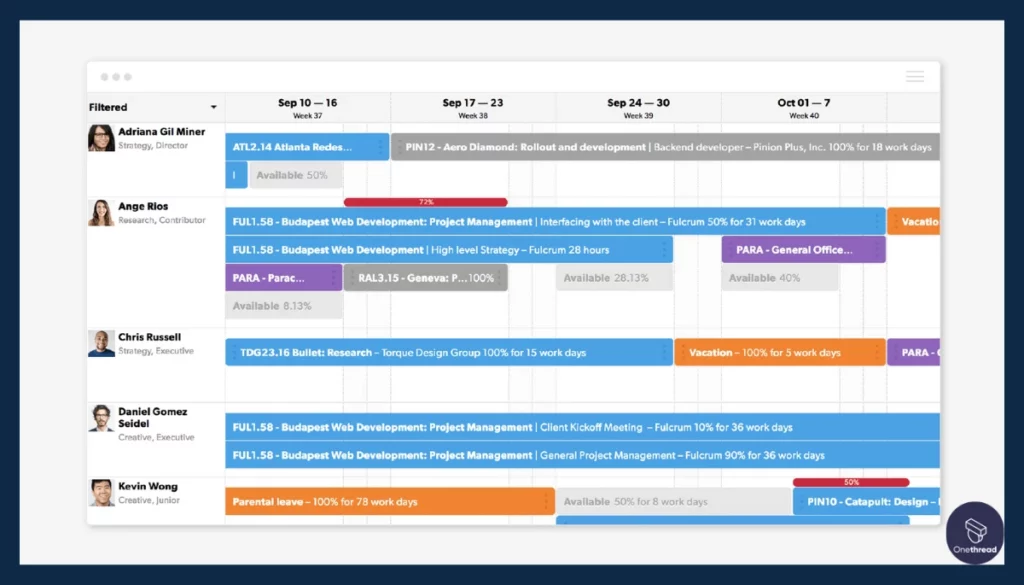
Smartsheet users can easily assign tasks, responsibilities, and projects, ensuring that resources are utilized optimally. This feature significantly enhances productivity and project management efficiency.
3. Customizable Dashboards and Reports
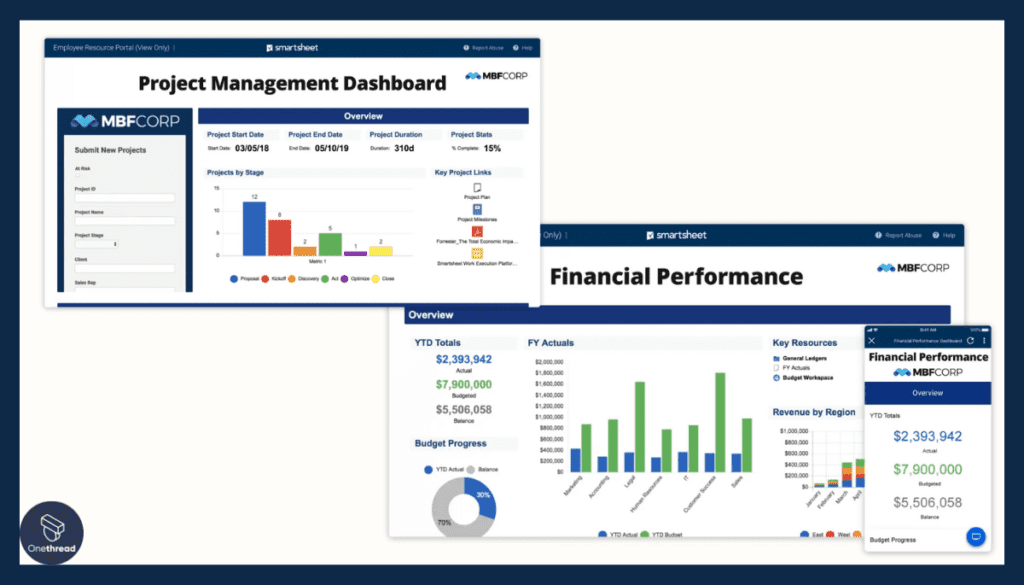
Smartsheet lets users customize dashboards, portals, analytics, and reports to align with their specific business processes. This customization empowers organizations to visualize data in a way that makes the most sense to them, enhancing the decision-making process and capacity planning effectiveness.
4. Collaboration Prowess
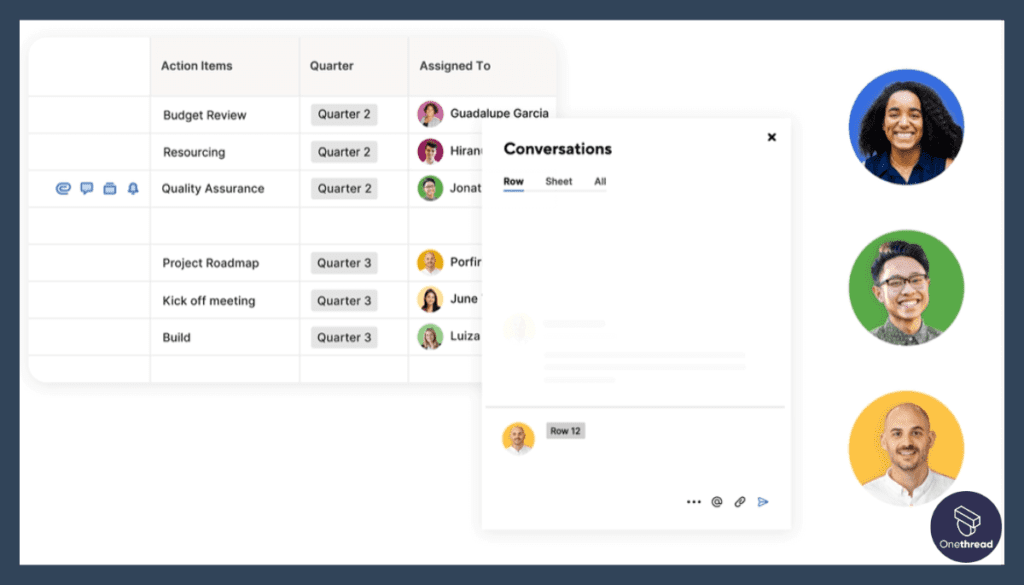
With Smartsheet, teams can collaborate in real time, sharing information and insights seamlessly. This feature fosters a culture of collaboration and ensures that everyone is on the same page, enhancing capacity planning coordination.
5. Scalability and Integration
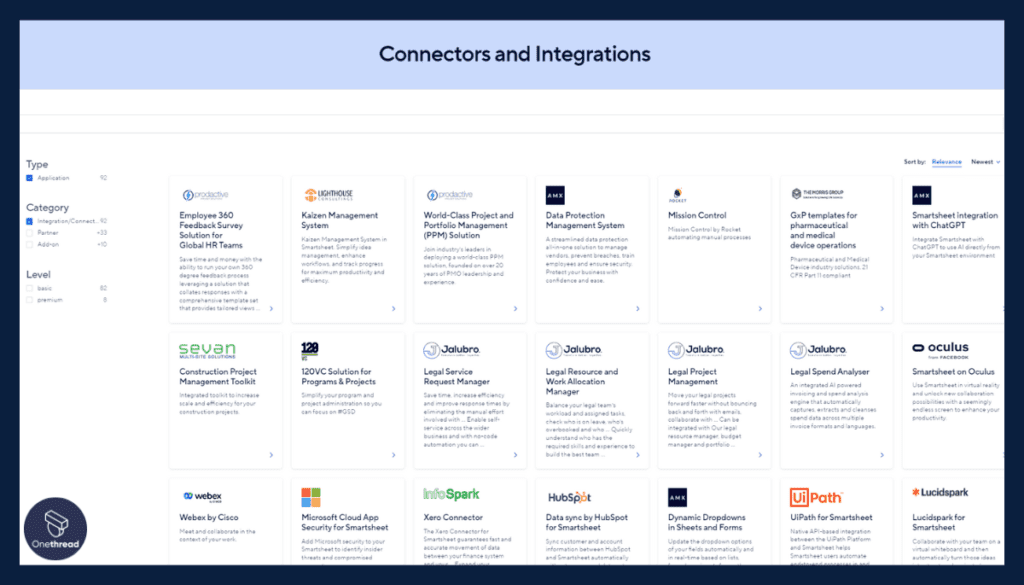
Smartsheet offers scalability that allows organizations to adapt to changing demands without sacrificing efficiency. Additionally, the software integrates seamlessly with a wide range of other tools and systems, ensuring a cohesive workflow and data flow within the organization.
Pros:
- Powerful Gantt chart features for visual planning
- Robust resource allocation tools
- Customizable dashboards and reports
- Seamless collaboration capabilities
- Extensive integration options
Cons:
- Pricing may be on the higher side for small businesses
- Advanced features may require additional training
- Limited focus on portfolio management
Pricing Plans
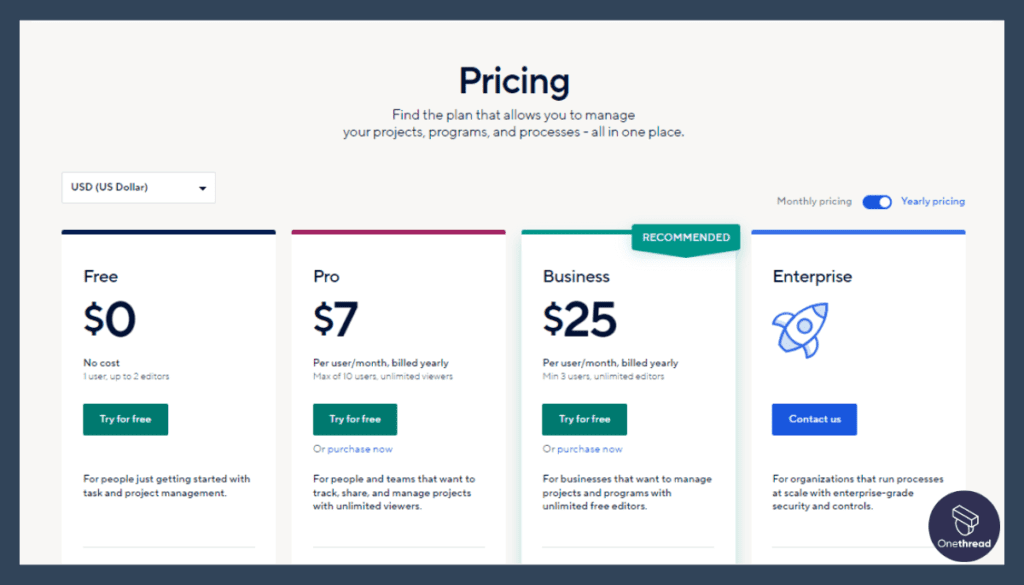
- Individual Plan: Starts at $14 per user per month
- Business Plan: Contact sales for pricing
- Enterprise Plan: Contact sales for pricing
Customer Ratings:
- G2: 4.3 out of 5 stars
- Capterra: 4.4 out of 5 stars
Review
Smartsheet is a versatile project management tool. It excels in flexibility, offering a spreadsheet-like interface. This makes it familiar for many users. It’s great for task tracking, planning, and automating workflows. Integration with other tools like Google Workspace and Microsoft Office is a plus.
On the downside, the interface can feel dated. Users used to more visual platforms may find it less intuitive. Also, advanced features are locked behind higher pricing tiers. Small teams on a budget may find this limiting.
Smartsheet is a strong option for those comfortable with spreadsheet-style management but falls short in user interface and affordability for some.
#3. Parallax
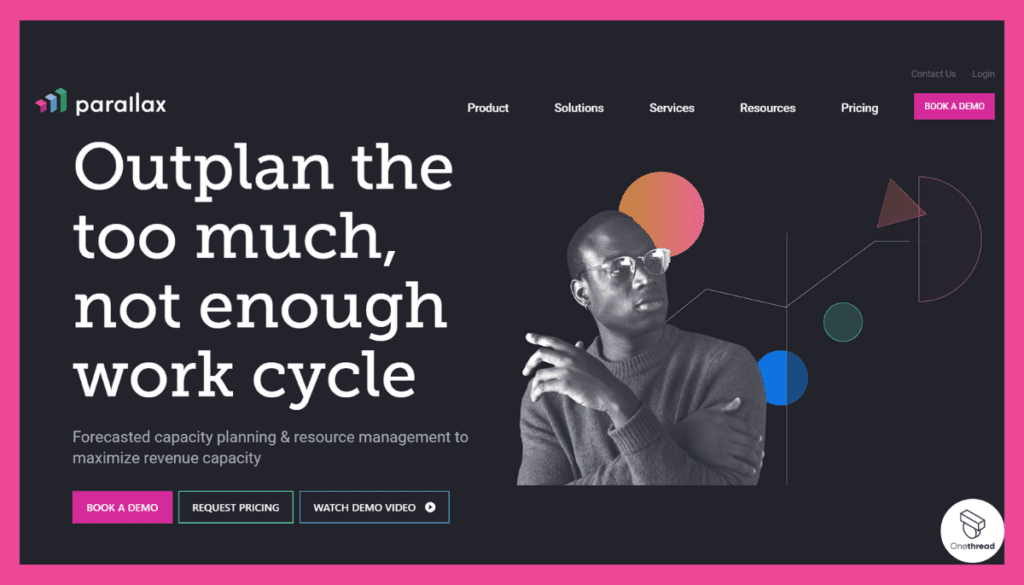
Parallax can refer to different products or concepts, depending on the industry. If you’re referring to Parallax Inc., they offer educational robotics and microcontrollers. These are designed for learning coding and engineering skills.
The products are beginner-friendly but also suit advanced users. They offer comprehensive tutorials and customer support. If you’re talking about parallax scrolling in web design, it creates an illusion of depth. It makes websites more engaging.
Different elements move at varying speeds during scrolling. It boosts user interaction and engagement. In both cases, Parallax aims to enhance experience by making learning interactive or increasing web engagement. Clarification is needed to provide a more targeted description.
Parallax – Overview
- Employee Numbers: <25 employees
- Founding Team: Tom O’Neill is the CEO and co-founder of Parallax.
Features
Let’s delve deep into the five standout features that make Parallax a leading choice for businesses seeking to optimize their capacity planning processes.
1. Comprehensive Portfolio Management
Parallax users can gain a bird’s-eye view of their entire project portfolio, ensuring that resources are allocated efficiently across various initiatives. This feature enhances strategic planning and resource optimization on a grand scale.
2. Robust Resource Allocation
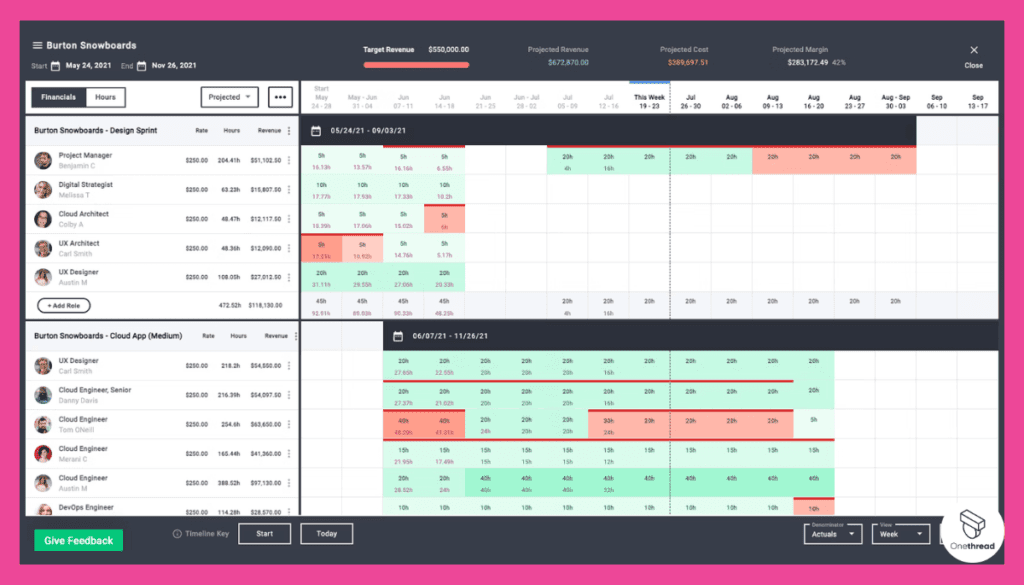
Parallax provides robust resource allocation tools that simplify the process. Users can assign tasks, projects, and responsibilities precisely, ensuring that resources are distributed optimally to meet project requirements.
3. Customizable Dashboards and Analytics
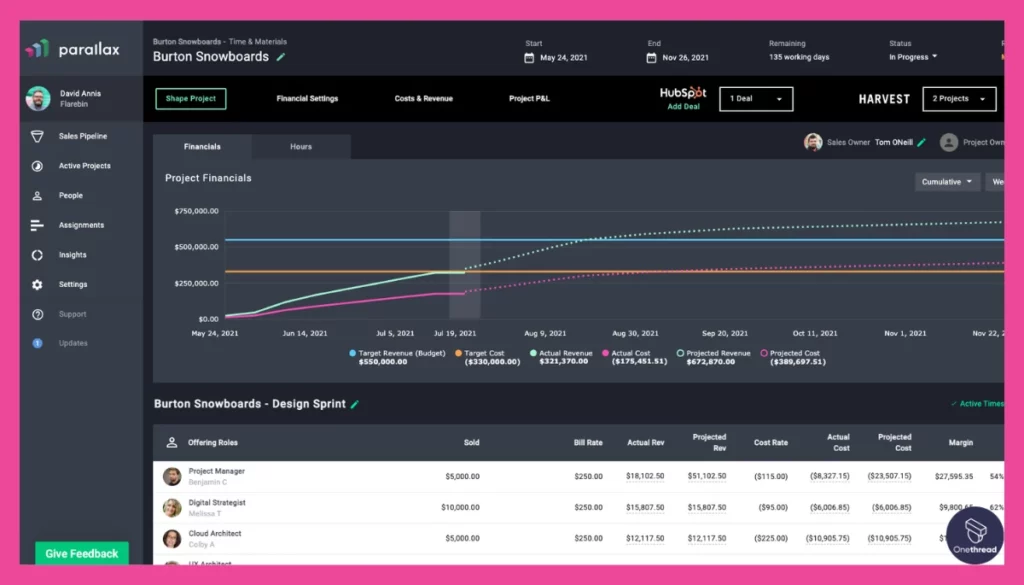
Parallax offers customizable dashboards, portals, analytics, and reports, allowing organizations to tailor the software to their unique processes. This customization empowers teams to visualize data in a way that resonates with their specific needs, enabling more informed decision-making.
4. Seamless Integration Capabilities
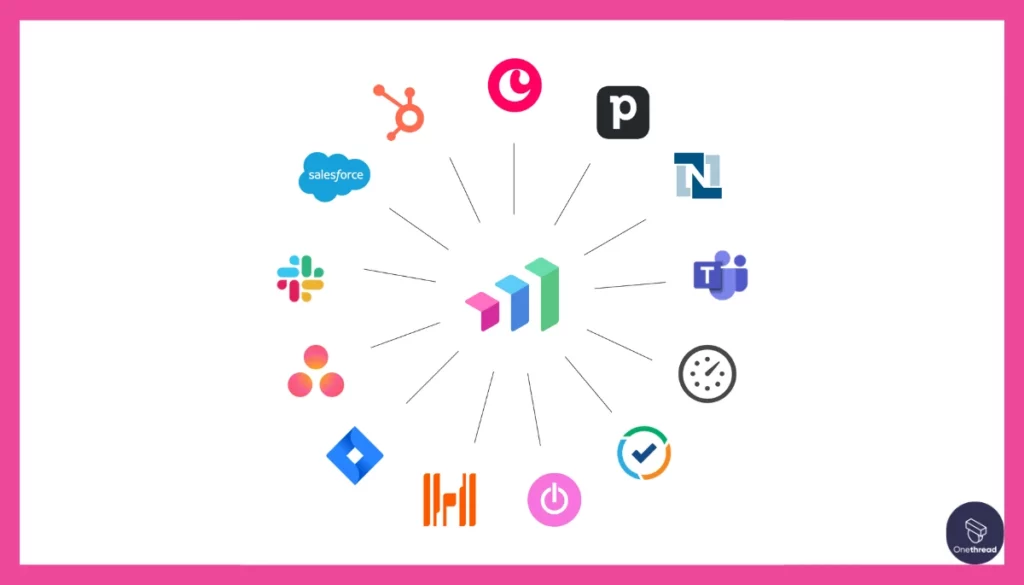
Parallax seamlessly integrates with various other tools and systems within the organization. Whether it’s project management software, CRM systems, or communication platforms, Parallax ensures that capacity planning aligns seamlessly with your existing tech stack.
5. Scalability for Growth
Parallax offers scalability that enables organizations to adapt to changing demands without losing efficiency. This flexibility ensures that your capacity planning remains aligned with your growth trajectory, no matter how ambitious.
Pros:
- Specialized in portfolio management
- Robust resource allocation tools
- Customizable dashboards and reports
- Seamless integration capabilities
- Scalability for evolving business needs
Cons:
- Pricing can be on the higher side for small businesses
- May require additional training for advanced features
- Limited focus on visual capacity planning
Pricing Plans
- Starter Plan: Contact sales for pricing
- Growth Plan: Contact sales for pricing
- Enterprise Plan: Contact sales for pricing
Customer Ratings:
- G2: 4.5 out of 5 stars
- Capterra: 4.4 out of 5 stars
Review
Parallax is often associated with web design, creating a sense of depth and movement. When done well, it captures attention and enhances user engagement. It can make websites feel dynamic and modern. It’s particularly effective for storytelling or guiding users through a site.
However, Parallax has its drawbacks. It can slow down website loading times, affecting user experience and SEO rankings. Not all web browsers support it, limiting reach. It may also distract from key content or calls to action, reducing effectiveness.
Parallax can be a striking design choice but comes with performance and focus trade-offs. Use it wisely to balance aesthetics and functionality.
#4. NetSuite ERP
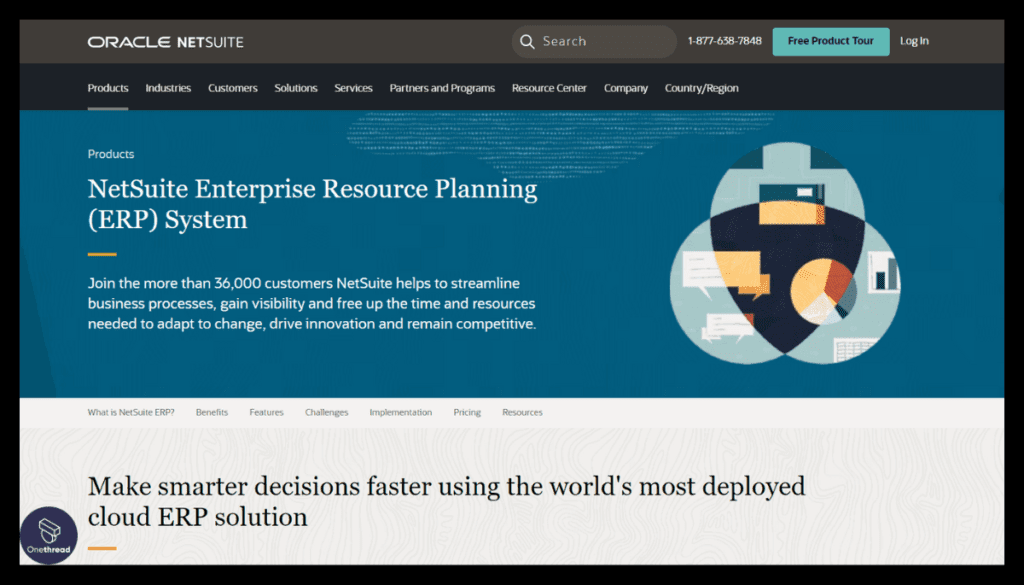
NetSuite ERP is a cloud-based software suite. It’s designed to manage business operations. The platform is comprehensive. It covers financials, CRM, and e-commerce. Real-time data is a key feature. It helps in decision-making.
The software is scalable. It grows with your business. Customization is easy with industry-specific modules. NetSuite ERP integrates well with other systems. It offers automated workflows to save time.
Inventory management, order processing, and financial tracking are streamlined. Dashboards are user-friendly, providing quick insights. Security is robust, ensuring data protection. NetSuite ERP is ideal for small to large businesses looking for a unified solution to manage diverse operations.
NetSuite ERP- Overview
- Company Valuation: US$9.3 billion
- Employee Numbers: 10,001+ employees
- Founding Team: Evan Goldberg, Founder and CEO.
Features
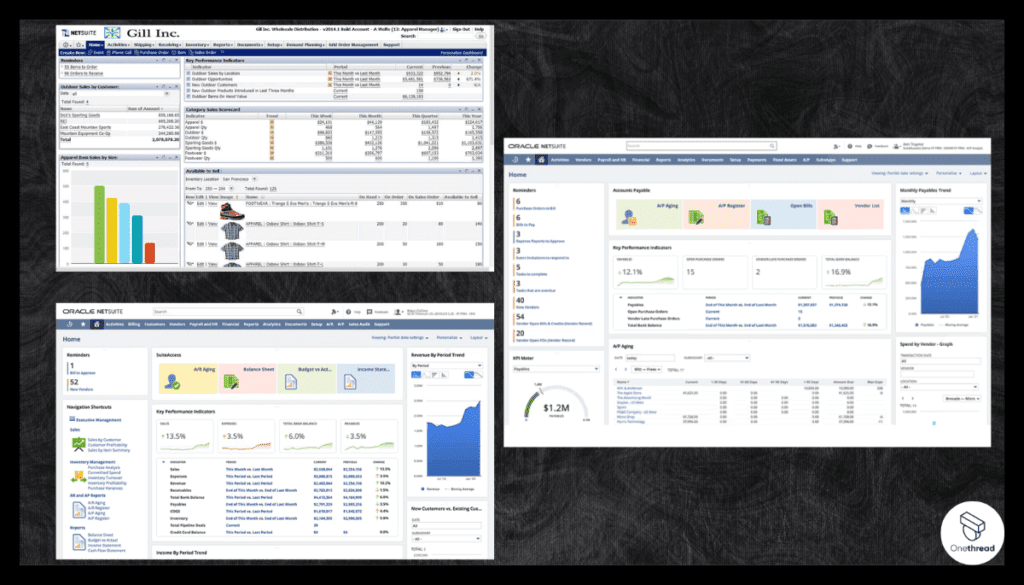
Let’s explore in-depth the five prominent features that make NetSuite ERP a formidable choice for businesses aiming to optimize their capacity planning processes.
1. Holistic Resource Management
NetSuite ERP users gain access to a unified platform where they can oversee not only capacity planning but also financials, procurement, and project management. This holistic resource management approach enhances strategic planning and resource optimization across the entire enterprise.
2. Streamlined Resource Allocation
NetSuite ERP offers robust resource allocation tools that simplify the process. Users can assign resources, tasks, and projects precisely, ensuring that resources are optimally distributed to meet project requirements.
3. Advanced Analytics and Reporting
NetSuite ERP offers advanced analytics and reporting capabilities, enabling organizations to gain insights from their data. Customizable dashboards and reports empower teams to visualize and analyze data in a way that aligns with their specific requirements, facilitating more informed decision-making.
4. Seamless Integration with ERP
One of the critical strengths of NetSuite ERP is its seamless integration with ERP functionalities. Whether it’s financial management, order processing, or inventory control, NetSuite ERP ensures that capacity planning remains an integral part of the larger organizational framework.
5. Scalability for Enterprise Growth
NetSuite ERP offers scalability that allows organizations to adapt to evolving demands without sacrificing efficiency. This scalability ensures that capacity planning remains in sync with enterprise growth, no matter how expansive.
Pros:
- Comprehensive resource management
- Robust resource allocation tools
- Advanced analytics and reporting
- Seamless integration with ERP functionalities
- Scalability for enterprise growth
Cons:
- Pricing can be on the higher side for smaller businesses
- May require substantial training and implementation efforts
- Complexity may not suit organizations with simpler needs
Pricing Plans
Pricing for NetSuite ERP varies based on your organization’s specific requirements. It typically involves a licensing fee based on user count and your chosen modules. Custom quotes are provided upon request.
Customer Ratings:
- G2: 4.1 out of 5 stars
- Capterra: 4.1 out of 5 stars
Review
NetSuite ERP is a cloud-based solution geared for medium to large enterprises. It offers a range of features, from finance and CRM to supply chain management. Its strength lies in its scalability and integration, making it a one-stop-shop for various business needs.
However, NetSuite ERP has its downsides. The platform can be complex, requiring a steep learning curve for new users. Customization options are plenty but can become overwhelming. Cost is another concern. Initial setup and ongoing subscription fees can add up, making it less accessible for smaller businesses.
NetSuite ERP offers robust features and scalability but may be costly and complicated for some.
#5. Float
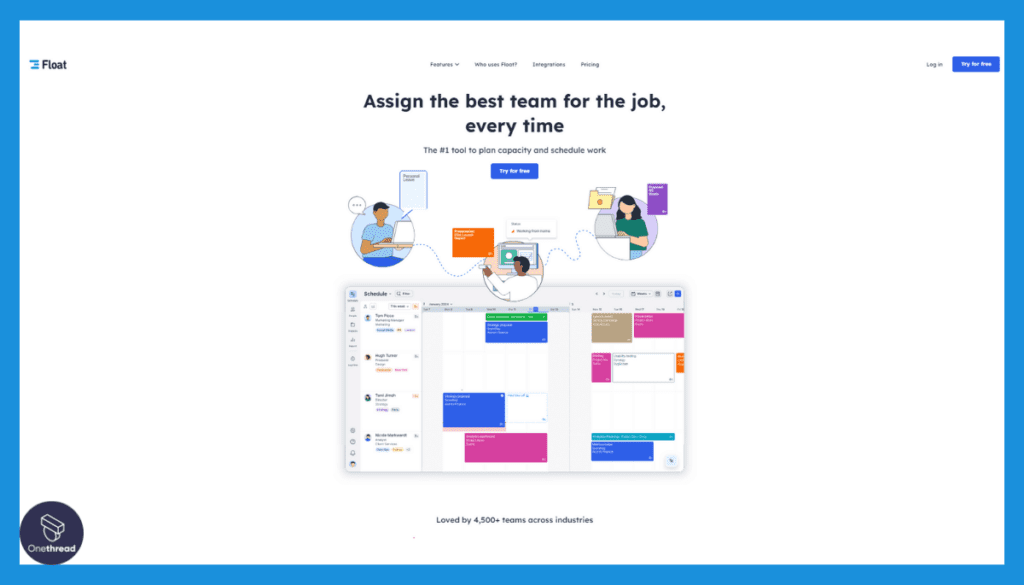
Float is a resource management software. It’s aimed at teams and businesses. The core feature is scheduling. You can allocate tasks, set deadlines, and track time. It’s visual and intuitive. You see everyone’s workload at a glance.
The software is cloud-based, allowing remote access. Real-time updates keep teams synced. Float also integrates with tools like Slack, Google Calendar, and Zapier. Reporting features are robust. They offer insights into resource utilization.
Budget tracking is another useful feature. It helps manage costs effectively. Float is particularly popular among agencies, consultancies, and internal teams. It maximizes resource efficiency, improves planning, and aids in meeting deadlines.
Float – Overview
- Employee Numbers: 46 Employees
- Founding Team: Jesse Ghansah is the Founder and CEO at Float.
Features
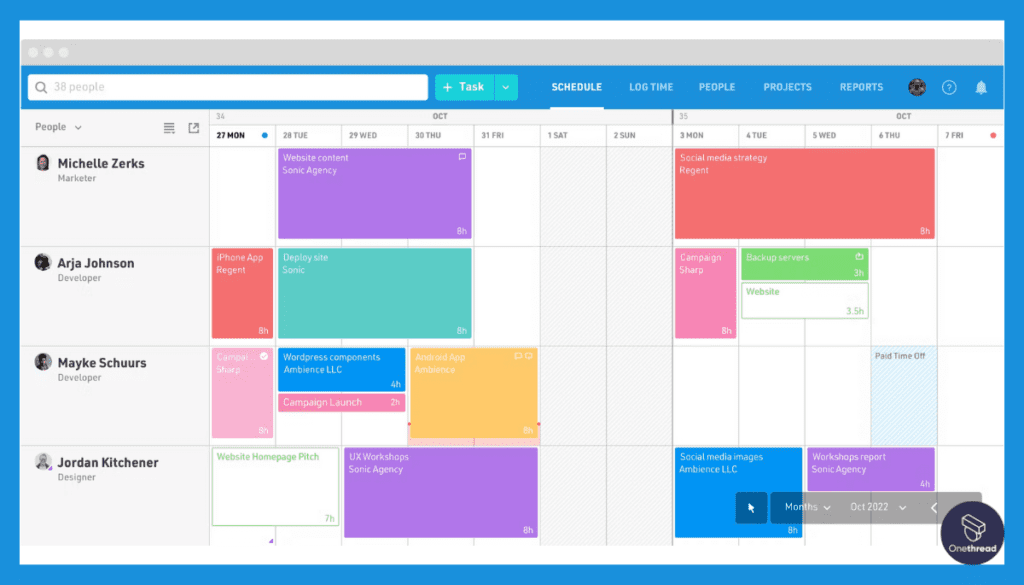
In the landscape of Capacity Planning Software, Float emerges as a dynamic and agile solution that excels in optimizing resource management and capacity planning. Let’s delve into the five standout features that make Float a top-tier choice for businesses aiming to enhance their capacity planning processes.
1. Real-Time Workload Insights
Float users can access interactive boards and charts that provide an instant, clear view of their team’s workload. This real-time visual approach empowers users to allocate resources effectively, ensuring that no team member is overburdened or underutilized.
2. Intuitive Resource Allocation
Float provides intuitive resource allocation tools that streamline the process. With drag-and-drop functionality and customizable workflows, users can easily assign tasks, projects, and responsibilities. It ensures that resources are distributed optimally to meet project requirements.
3. Seamless Collaboration
Float allows teams to collaborate in real-time, sharing information and insights seamlessly. This collaboration feature fosters a culture of teamwork and ensures that everyone is aligned, enhancing capacity planning coordination.
4. Real-Time Adjustments
Float’s real-time capabilities enable users to adjust their capacity plans on the fly. As changes occur or new demands arise, users can modify their capacity planning strategies in real time.
5. Integration Flexibility
Float understands the importance of seamless integration within an organization. Whether it’s project management tools, CRM software, or communication platforms, Float ensures that capacity planning remains synchronized with the broader ecosystem.
Pros:
- Real-time visual workload insights
- Intuitive resource allocation tools
- Seamless collaboration capabilities
- Agile real-time adjustments
- Extensive integration options
Cons:
- May not offer as many advanced features as some enterprise-focused solutions
- Pricing plans may not be suitable for all business sizes
- Limited focus on portfolio management
Pricing Plans
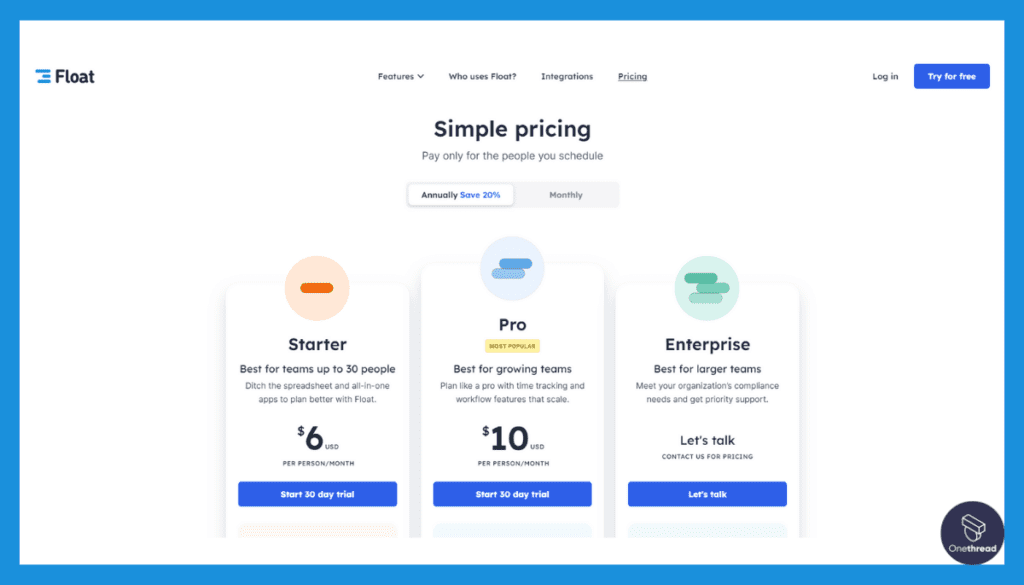
Float offers transparent and flexible pricing based on the number of users:
- Free Plan: Ideal for small teams with up to 10 users
- Business Plan: Starting at $5 per user per month for larger teams
- Enterprise Plan: Custom pricing for organizations with specific requirements
Customer Ratings:
- G2: 4.6 out of 5 stars
- Capterra: 4.5 out of 5 stars
Review
Float is a resource scheduling and project planning tool. It’s known for its intuitive, visual interface. Users can easily allocate resources and track timelines with a simple drag-and-drop. The real-time updates and collaboration features make it ideal for team management. It also offers solid reporting tools for better oversight.
However, Float has limitations. While it excels in resource planning, it lacks comprehensive project management features like issue tracking or advanced analytics. The mobile experience could also be improved, as some users find it less functional compared to the desktop version.
Float is excellent for resource scheduling but may require pairing with other tools for full project management capabilities.
Getting the Most Out of Capacity Planning Software
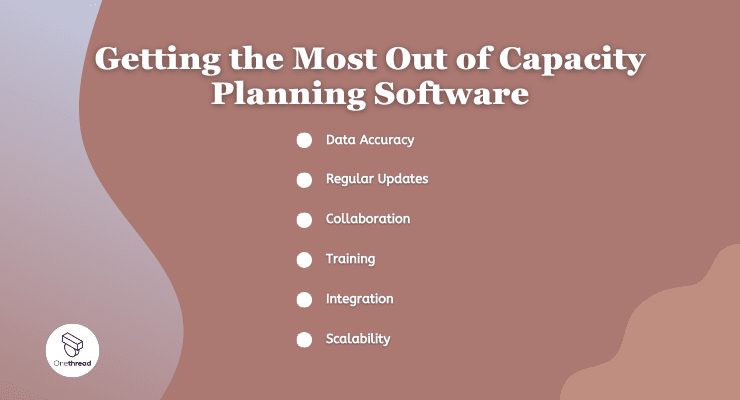
Effective utilization of Capacity Planning Software is pivotal for resource optimization and streamlined operations. To make the most of these powerful tools, consider the following best practices:
- Data Accuracy: Ensure that the data you input is accurate and up-to-date. Precision is key in capacity planning.
- Regular Updates: Keep your plans dynamic by updating them regularly to reflect changing demands and resource availability.
- Collaboration: Foster a collaborative environment where team members can communicate, share insights, and align on resource allocation.
- Training: Provide training to your team to maximize software utilization and harness its full potential.
- Integration: Seamlessly integrate the software with other tools in your tech stack for a cohesive workflow.
- Scalability: Choose software that can grow with your organization to accommodate evolving capacity planning needs.
By following these best practices, you’ll harness the true power of Capacity Planning Software, enhancing resource allocation, project efficiency, and overall productivity.
Conclusion
Capacity Planning Software serves as a vital asset for modern businesses aiming to optimize resource management and enhance productivity. These tools offer real-time insights, intuitive resource allocation, and seamless collaboration, empowering organizations to adapt swiftly to changing demands.
While each software solution brings its unique strengths, the common goal is to facilitate efficient capacity planning and resource optimization, ultimately driving success and growth in today’s dynamic business landscape.
FAQs
What are the key features to look for in Capacity Planning Software?
Key features include real-time workload insights, resource allocation tools, customizable dashboards, integration capabilities, and scalability.
How does Capacity Planning Software benefit collaboration within teams?
Capacity Planning Software facilitates real-time collaboration, allowing team members to communicate, share insights, and align on resource allocation, leading to better coordination.
Can Capacity Planning Software integrate with other business tools?
Yes, many Capacity Planning Software solutions offer integration options to seamlessly connect with other tools in your tech stack for a cohesive workflow.
What types of organizations can benefit from Capacity Planning Software?
Capacity Planning Software is beneficial for businesses of all sizes and industries that need to manage resources efficiently and adapt to changing demands.
